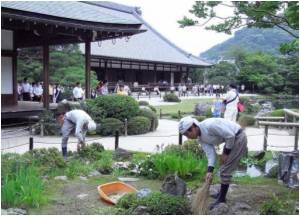Light-coloured cool rooftops and roads can curb carbon emissions and combat global climate change, found a new study by searchers at Lawrence Berkeley National Laboratory.

And the researchers have found that implementing cool roofs and cool pavements in cities around the world can not only help cities stay cooler, they can also cool the world, with the potential of cancelling the heating effect of up to two years of worldwide carbon dioxide emissions.
Because white roofs reflect far more of the sun's heat than black ones, buildings with white roofs will stay cooler.
If the building is air conditioned, less air conditioning will be required, thus saving energy.
Even if there is no air conditioning, the heat absorbed by a black roof both heats the space below, making the space less comfortable, and is also carried into the city air by wind-raising the ambient temperature in what is known as the urban heat island effect.
Additionally, there's a third, less familiar way in which a black roof heats the world- it radiates energy directly into the atmosphere, which is then absorbed by the nearest clouds and ends up trapped by the greenhouse effect, contributing to global warming.
Advertisement
For the northern hemisphere summer, they found that increasing the reflectivity of roof and pavement materials in cities with a population greater than 1 million would achieve a one-time offset of 57 gigatons (1gigaton equals 1 billion metric tons) of CO2 emissions (31 Gt from roofs and 26 Gt from pavements).
Advertisement
"These offsets help delay warming that would otherwise take place if actual CO2 emissions are not reduced," said Surabi Menon, lead author of the paper.
Co-author Hashem Akbari emphasizes that cool roofs and pavements are only a part of the solution.
"Two years worth of emissions is huge, but compared to what we need to do, it's just a dent in the problem. We've been dumping CO2 into the atmosphere for the last 200 years as if there's no future," said Akbari.
The results of the study were published online in the journal Environmental Research Letters.
Source-ANI









